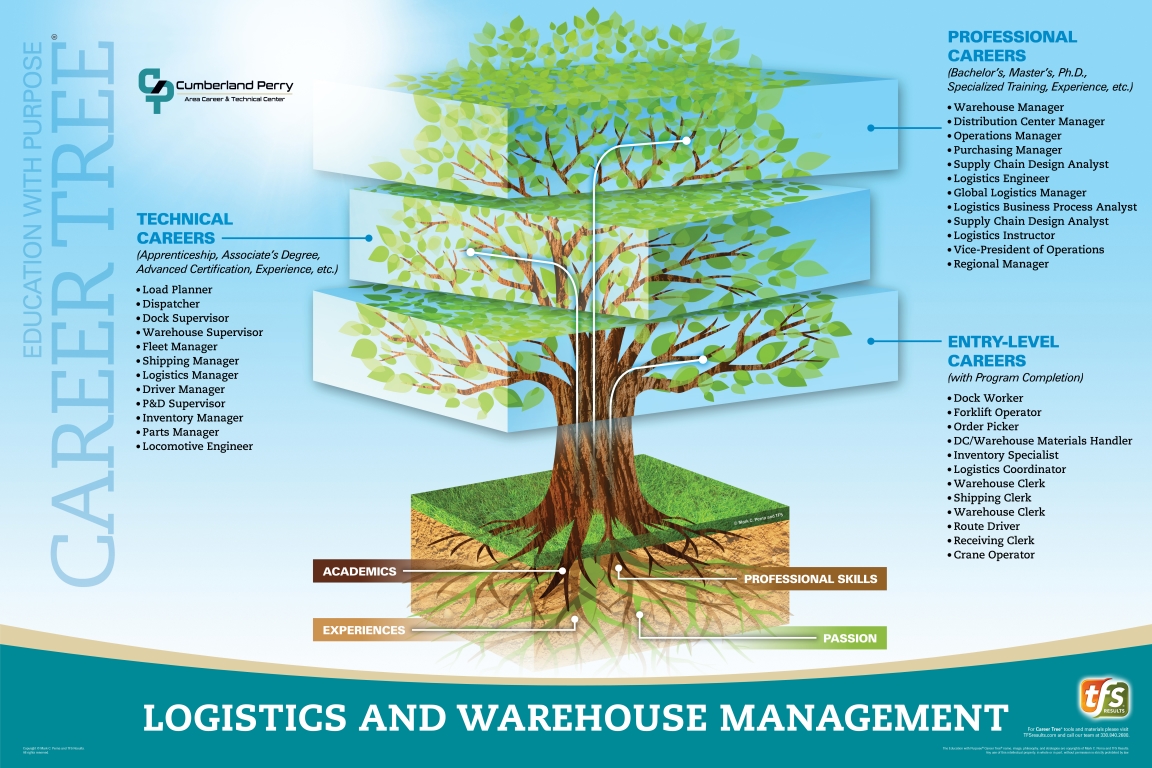Logistics & Warehouse Management
What is Logistics & Warehouse Management?
Logistics & Warehouse Management students will receive training in the technical and "hands on" aspects of operating a warehouse. Instruction will center on "inventory control", which is a plan for supply needs; control of goods received; efficient accessible storage; and proper distribution of materials. Effective record keeping is stressed. Additional activities will include: materials organization; inspection of goods and accounting for warehouse merchandise; receiving and shipping practices; and the use of power equipment such as forklifts, electric pallet jacks, rollers, and conveyor belts for loading, unloading, or placement of packaged merchandise in warehouse or storage areas. Students will receive actual training in "live" work situations. Students' experiences will be comprised of working in a warehouse area that stores in excess of $100,000 of stock merchandise a year and will become familiar with handling merchandise that ranges in weight from one ounce to three tons. The program also offers use of Radio Frequency (RF) barcode scanners to track materials throughout the warehouse.
Is it for You?
Students interested in this field should be willing to do physical "hands-on" work and should be comfortable working in a small group or team. Working conditions of warehouse personnel vary greatly and may be performed indoors or outdoors. Depending on the type of employer and the material worked with, warehouse personnel may be exposed to dust, dirt, oil, chemicals, noise, or vibration. Some may have to work around furnaces, where temperatures are high, or in refrigerated storage areas. Hazards include: cuts and bruises from crowbars, hammers, and other hand tools, and injuries from falling objects. Warehouse personnel generally work a five-day, forty-hour week, although shift work may be necessary for individuals working in businesses that operate more than eight hours per day. Successful professionals in this field typically possess the following skills:
The ability to work well with others.
The ability to keep efficient and accurate records.
The ability to master basic math computations.
The ability to multi-task.
Communication and customer service skills.
Program Objectives
| Level 1 Certification: OSHA 10 Safety
POS TASKS:
|
Level 2
POS TASKS:
OPTION: Cooperative Education (Ryder Logistics and True Temper DC) | |
What's Next
Potential Career Pathways
* Salaries listed are PA state averages taken from www.onetonline.com and are accurate as of 2020.
Laborers & Freight, Stock, and Material Movers ($27,910)
Shipping, Receiving, and Traffic Clerks ($36,650)
Forklift Operator ($35,930)
First-Line Supervisors of Transportation & Material-Moving Machine & Vehicle Operators ($61,600)
Supply Chain Managers ($94,560)
Logistics Analyst (74,750)
...and many more
Post-Secondary Studies
*Some employment options may require additional study.


